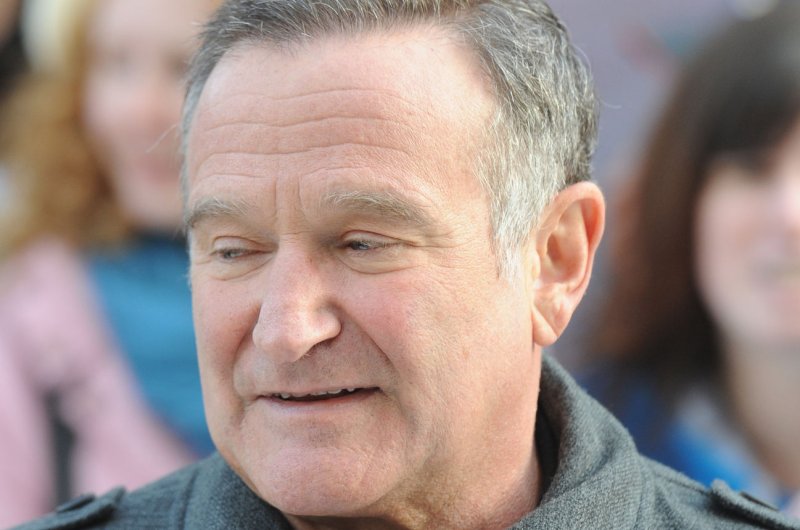NEW YORK, July 31 (UPI) — A new study examines the spread of suicidal behavior quickly and far after the suicides of Robin Williams in 2014, and Kate Spade and Anthony Bourdain, which occurred within three days in 2018.
The study, conducted by the Columbia University Mailman School of Public Health in New York City, was published Wednesday in Science Advances.
Researchers have created a computer model to assess the power of the “contagion” of suicide – the idea that death in this way often occurs in groups, with the behavior of one or more people influencing others.
They found that the events of 2014 and 2018 caused a significant increase in the contagious transmission of suicidal thoughts and behaviors. They said that these findings lay the groundwork for measuring the prevalence of suicide to detect, prevent and prevent its spread.
“When suicide is depicted in popular books or famous people die by suicide or attempt suicide, it somehow becomes normal for people who identify with those people,” said Jeffrey Shaman, co-author of the study. who is also a professor of environmental health sciences. Mail School.
“We want to better understand suicide rates, how they vary among people and track local and national suicide rates,” said Shaman, who is also interim director of the Columbia Climate School. and is known to produce strains of influenza and SARS- CoV-2.
The researchers estimated whether the behavior of famous people is “an influence that causes other people to act or think that way,” he said, adding that “they will use such findings to draw attention to without prevention efforts and mental health services.”
The suicide cluster model has a similar structure to that of other infection processes, including the number of people who are able to transmit the infection and the number of people who are at risk of infection.
No single reason is responsible for suicide or suicidal thoughts – suicidal thoughts, the researchers said.
However, experts have long claimed that part of suicidal ideation is caused by social, or contagious, factors. They say that being close to or familiar with people who have thought about, tried to kill or committed suicide can lead to suicidal thoughts or attempts among people at risk.
Suicide rates increased by 36% between 2000 and 2021, according to the Centers for Disease Control and Prevention.
There were 48,183 people who died by suicide in 2021 – about one every 11 minutes. The number of people who are thinking about or attempting suicide is even higher, the CDC report.
In this study, the researchers’ model of suicide uses two data sources. The total number of weekly calls to the National Suicide Prevention Lifeline, now known as the 988 Suicide and Crisis Lifeline, served as a predictor of suicidal ideation. Death data comes from the National Vital Statistics System, which is managed by the National Institute for Health Statistics.
The model estimated a reported increase in suicide rates, including a 1,000-fold increase in the likelihood that someone would have had suicidal thoughts following news of Williams’ death by suicide. in 2014.
Most of the suicide rate changes after the news of Spade and Bourdain’s suicide in 2018 was almost half.
Among the two most famous suicides – because Spade and Bourdain died three days apart, researchers treated their deaths as a single event – the number of people who committed suicide was about twice as long after Williams’ death.
This may indicate a difference between the communication and attention of the media after each event and the level of relationship between the citizens and the deceased, the researchers said.
In the 2014 and 2018 comparisons, they noted that the high suicide rate lasted two weeks before returning to baseline.
Finally, with further research, the model can provide real-time estimates of suicidality and risk. This may require real-time information on calls and deaths from the 988 Suicide and Crisis Lifeline and the National Vital Statistics System.
The National Institute of Mental Health funded this study.
The study is “a new example of how national survey data can be used to measure prevalence and estimate the duration of increased risk in a population after high-risk suicide,” said Holly Wilcox, professor and a suicide prevention researcher at the Johns Hopkins Bloomberg School. Public Health Baltimore.
Wilcox, who was not involved in the study, suggested revising the study to identify subgroups of the population that need support and outreach in the wake of celebrity suicides.
“Parts of media coverage of celebrity suicides can increase or decrease suicidal behavior and can be particularly harmful to a vulnerable group as evidenced by the increase in calls of suicide and suicide,” he said.
Dr. Casey Berson, medical director of Prisma Health’s Center for Psychiatry in Greer, SC, said he is pleased that researchers are willing to use the results of the study to promote rational change to help prevent suicide.
It’s important to “show that suicide is complex and multifactorial,” said Berson, a child and adolescent psychiatrist. He added that while connecting viewers and devices, the media and entertainment industry can show that help is available.
He also recommended using non-judgmental language and avoiding details about suicide methods.
Social media can also help people interact in ways that can support suicide prevention,” said Dr. Alan Teo, a psychiatrist and mental health services researcher who is a professor at Oregon Health & Science University in Portland.
Teo also noted that “some methods used in the study of infectious diseases such as COVID may be directly applicable to understanding how suicide ‘spreads’ in a similar way,”
However, “we really don’t know if the model presented is an accurate predictor of future suicide. We need to know if the model works outside of the limited context of what was examined in the study, which after That’s really what predictive analytics is all about.”
If you or someone you know is suicidal, call 988 Suicide and Tragedy Lifeline.
#Columbia #study #finds #high #rate #suicide #celebrity #death #UPI.com

